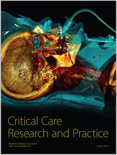
Critical Care Research and Practice
Scope & Guideline
Exploring breakthroughs in intensive care medicine and patient outcomes.
Introduction
Aims and Scopes
- Clinical Outcomes and Prognostic Indicators:
The journal emphasizes the importance of understanding clinical outcomes in critically ill patients, including mortality prediction, recovery metrics, and long-term functional status. - Infection and Antimicrobial Resistance:
A significant focus is placed on the burden of infections, particularly in ICU settings, including studies on antibiotic resistance patterns and the management of multidrug-resistant organisms. - Innovative Therapeutic Approaches and Interventions:
Research on novel therapeutic strategies, such as the use of ketamine, ECMO, and advanced ventilation techniques, is a core component, highlighting the evolution of treatment in critical care. - Pediatric Critical Care:
The journal includes a dedicated section for pediatric critical care, addressing unique challenges and treatment methodologies for critically ill children. - Ethics and Decision-Making in Critical Care:
Exploration of ethical dilemmas and decision-making processes in critical care situations, including end-of-life care and consent issues, is an important area of research. - Quality Improvement and Patient Safety:
Research that focuses on quality improvement initiatives and patient safety protocols within critical care settings is consistently highlighted.
Trending and Emerging
- Impact of COVID-19 on Critical Care:
The ongoing exploration of COVID-19's impact on critical care practices, including management strategies, patient outcomes, and resource utilization, remains a prominent theme, reflecting the pandemic's lasting effects on healthcare. - Predictive Analytics and Machine Learning:
Emerging studies utilizing predictive analytics and machine learning for improving patient outcomes in critical care settings indicate a growing trend towards data science integration in clinical decision-making. - Interprofessional Collaboration in Critical Care:
Research focusing on the dynamics of interprofessional teamwork and its impact on patient care in ICU settings is gaining traction, emphasizing the importance of collaborative approaches in managing complex cases. - Long-Term Outcomes and Follow-Up Care:
There is an increasing emphasis on understanding the long-term outcomes of critically ill patients, including post-ICU syndrome and recovery trajectories, highlighting the need for comprehensive follow-up care.
Declining or Waning
- Traditional Ventilation Techniques:
Research on conventional mechanical ventilation strategies has seen a decrease, likely due to the emergence of more advanced and tailored ventilation approaches. - Non-Evidence-Based Practices in ICU:
There is a noticeable reduction in studies focusing on practices lacking strong evidence, as the field increasingly prioritizes data-driven clinical guidelines. - Generalized Pain Management Approaches:
Research on broad, non-specific pain management strategies is declining, as there is a shift towards personalized, multimodal pain management protocols.
Similar Journals
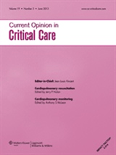
Current Opinion in Critical Care
Delivering essential insights for critical care professionals.Current Opinion in Critical Care, published by Lippincott Williams & Wilkins, is a leading journal in the field of Critical Care and Intensive Care Medicine. With an ISSN of 1070-5295 and an E-ISSN of 1531-7072, this esteemed journal has been committed to disseminating high-quality and impactful research since its inception in 1996. The journal proudly ranks in the top quartile (Q1) of its category for 2023, affirming its position among the premier publications in critical care, with a Scopus ranking of #25 out of 110, placing it in the 77th percentile. Current Opinion in Critical Care offers essential insights, reviews, and discussions on the latest trends and best practices in the field, catering to the needs of researchers, clinicians, and students alike. Though it does not provide open access options, its contributions are pivotal in shaping patient care approaches and advancing clinical outcomes in critical care settings.
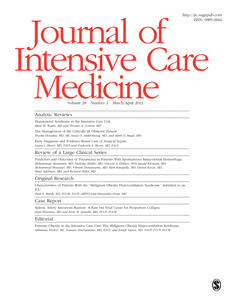
JOURNAL OF INTENSIVE CARE MEDICINE
Unveiling Breakthroughs in Critical Care PracticesJOURNAL OF INTENSIVE CARE MEDICINE, published by SAGE PUBLICATIONS INC, is a leading peer-reviewed journal dedicated to advancing the field of critical care and intensive medicine. With an ISSN of 0885-0666 and an E-ISSN of 1525-1489, this esteemed journal showcases innovative research, clinical practices, and synthesis of knowledge that informs the complexities of patient care in intensive settings. Recognized for its exceptional impact, it holds a prestigious Q1 ranking in the Critical Care and Intensive Care Medicine category, landing in the upper 15% of its field according to Scopus rankings. Celebrating over three decades of publication since its inception in 1986, the journal serves both as a resource for seasoned professionals and a platform for emerging researchers eager to contribute to evidence-based practice. Although not open access, the journal ensures that critical insights and advancements are accessible to a broad audience, fostering a collaborative environment that is essential for the evolution of intensive care protocols and the enhancement of patient outcomes. With its commitment to excellence, the JOURNAL OF INTENSIVE CARE MEDICINE stands out as an invaluable resource that continues to shape the future of healthcare in critical domains.
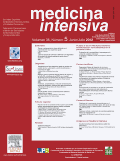
Medicina Intensiva
Empowering Healthcare Professionals with Cutting-edge ResearchMedicina Intensiva is a distinguished journal published by Elsevier España SLU, specializing in the critical care and intensive medicine fields. Since its inception in 1988, this peer-reviewed journal has established itself as a vital resource for healthcare professionals and researchers dedicated to advancing the knowledge and treatment of critically ill patients. With an impact factor ranked in the Q2 category for Critical Care and Intensive Care Medicine, the journal sits at the 50th percentile among its peers, reflecting its reputable standing in the academic community. The scope of the journal encompasses a wide array of topics, from clinical practices to innovative research findings, contributing significantly to the enhancement of patient care in intensive settings. Although the journal does not currently offer Open Access options, its valuable content is accessible to subscribers and institutions, reinforcing its role as an important conduit for disseminating high-quality research. As we continue into 2024, *Medicina Intensiva* remains committed to supporting the medical community through insightful articles and timely reviews that shape the future of intensive care.
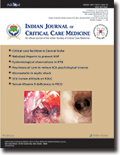
Indian Journal of Critical Care Medicine
Innovating Practices, Transforming Patient CareIndian Journal of Critical Care Medicine is a premier platform dedicated to advancing knowledge in the vital fields of Critical Care and Intensive Care Medicine. Published by JAYPEE BROTHERS MEDICAL PUBLISHERS PVT LTD, this journal has been a crucial resource since its inception in 2004, and it continues to play a significant role in disseminating groundbreaking research and clinical practices. With an impressive Scopus rank of #42 out of 110 and a 62nd percentile in its category, the journal is recognized for its quality and relevance within the medical community, achieving a Q2 category ranking in Critical Care and Intensive Care Medicine for the year 2023. Although not open-access, it provides essential insights tailored for researchers, healthcare professionals, and students alike, focusing on emerging trends, innovative techniques, and comprehensive reviews that enrich the discourse in critical care. By bridging gaps in knowledge and practice, the Indian Journal of Critical Care Medicine serves as an indispensable resource for those committed to improving patient outcomes in the ever-evolving landscape of critical care.

Acute and Critical Care
Exploring breakthroughs in acute medical situations.Acute and Critical Care is a leading open-access journal dedicated to the fields of critical care and intensive care medicine, published by the Korean Society of Critical Care Medicine. Since its inception in 2014, this journal has provided a platform for the dissemination of high-quality research, reviews, and innovative practices aimed at improving patient outcomes in acute medical situations. With an impressive Q2 ranking in both Critical Care and Intensive Care Medicine and in Critical Care Nursing for the year 2023, it is recognized as an influential source of knowledge among professionals in the field. The journal is indexed in Scopus, with notable rankings—7th out of 27 in Critical Care Nursing and 48th out of 110 in Critical Care and Intensive Care Medicine—highlighting its credibility and relevance. Situated in Seoul, South Korea, Acute and Critical Care aims to foster collaboration and engagement within the global community of researchers, presenting cutting-edge clinical applications and advancements in patient care.

Turkish Journal of Intensive Care-Turk Yogun Bakim Dergisi
Empowering Professionals with Cutting-Edge InsightsThe Turkish Journal of Intensive Care (Turk Yogun Bakim Dergisi), published by GALENOS PUBL HOUSE, is a premier, peer-reviewed open access journal dedicated to advancing the field of intensive care medicine. With its ISSN 2602-2974 and E-ISSN 2602-2974, this journal has been committed to providing high-quality research and clinical insights since its inception in 2002. The journal serves as a vital platform for professionals and researchers to disseminate innovative findings, explore emerging therapies, and discuss critical care practices, thereby contributing to enhanced patient outcomes in intensive care settings. Based in Istanbul, Turkey, it aims to foster an international dialogue among medical practitioners, researchers, and academicians dedicated to intensive care, ultimately contributing to the global body of knowledge in this crucial area of health care.
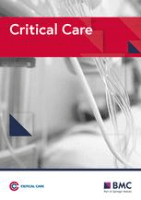
CRITICAL CARE
Bridging knowledge gaps in intensive medicine.CRITICAL CARE is an esteemed peer-reviewed journal dedicated to advancing the field of critical care and intensive medicine, published by BMC. Since its inception in 1998, it has been a prominent open-access platform that allows for the dissemination of high-quality research, fostering collaboration among researchers, healthcare professionals, and students globally. With a notable impact factor and ranking in the top quartile (Q1) of critical care and intensive care medicine, CRITICAL CARE occupies a vital role in disseminating cutting-edge findings and innovative practices that can significantly enhance patient outcomes in critical care settings. The journal not only encourages submissions of original research, clinical trials, and reviews but also emphasizes the importance of interdisciplinary approaches to critical care management. Positioned in the United Kingdom, CRITICAL CARE's commitment to open access ensures that its valuable content is readily available to a worldwide audience, reflecting its mission to bridge knowledge gaps and empower professionals in the pursuit of excellence in critical healthcare.

Anaesthesiologie
Advancing Anesthesia: Pioneering Research and PracticeAnaesthesiologie is a pivotal journal dedicated to advancing the field of anesthesiology and pain medicine. Published by Springer Heidelberg, this journal serves as a vital platform for disseminating high-quality research and clinical practice advancements within the domain. With an ISSN of 2731-6858 and an E-ISSN of 2731-6866, it operates out of Germany and achieves a respectable impact factor, placing it in the Q3 category for the field as of 2023. The Scopus rank reflects its standing among peers, being positioned at #64 out of 136, showcasing a 53rd percentile in anesthesiology and pain medicine. While open access options are currently unavailable, this journal remains committed to enhancing knowledge and practice standards for researchers, professionals, and students alike, particularly through the period spanning from 2022 to 2024. Contributions to Anaesthesiologie are essential for those seeking to stay at the forefront of innovations and challenges in anesthesia practice.

Critical Care and Resuscitation
Defining excellence in critical care and resuscitation research.Critical Care and Resuscitation is a premier peer-reviewed journal published by Elsevier, focusing on the dynamic fields of Anesthesiology, Critical Care, and Emergency Medicine. Established in Australia, this journal has been a significant contributor to scholarly research since its inception in 1999, maintaining a strong reputation with a commendable impact factor, evidenced by its Q1 quartile rankings across its relevant categories for 2023. The journal's commitment to disseminating high-quality research is reflected in its elite standings: it ranks #7 out of 109 in Emergency Medicine, #12 out of 136 in Anesthesiology, and #16 out of 110 in Critical Care. Aimed at researchers, clinicians, and healthcare professionals, Critical Care and Resuscitation provides a vital platform for the latest advancements in patient care and clinical strategies, making it an essential resource for those eager to stay at the forefront of these critical disciplines. Although lacking Open Access options, its rigorous peer-review process ensures the publication of valuable insights that shape current practices and influence future developments in healthcare.
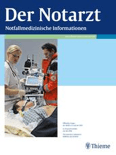
Notarzt
Elevating standards in emergency medicine through research.Notarzt is a well-regarded academic journal published by GEORG THIEME VERLAG KG, focusing on critical care, intensive care medicine, and emergency medicine. With an ISSN of 0177-2309 and an E-ISSN of 1438-8693, this German-based journal has been contributing to the medical field since its inception in 1985. Despite being categorized in the Q4 quartile for both Critical Care and Intensive Care Medicine and Emergency Medicine, Notarzt continues to provide a platform for innovative research, case studies, and developments that inform practitioners and researchers alike. With a publication history spanning significant years such as 1993 and 1999 to 2024, Notarzt is dedicated to improving outcomes in emergency and critical care settings through the dissemination of pivotal findings and comprehensive reviews. Although currently not an Open Access journal, it remains an essential resource for professionals striving to stay abreast of developments in their field.